The concept of recommending products is not novel. Before the advent of ecommerce, brick-and-mortar stores had already been employing this strategy. Product recommendations are effective, why? See the stats below:
- 37% of shoppers that clicked a recommendation during their first visit returned, compared to just 19% of shoppers that didn’t click a recommendation during their first visit.
- Purchases, where a recommendation was clicked, saw a 10% higher AOV and 5 times higher per-visit as compared to purchases where a recommendation was not clicked.
- Shoppers that clicked on recommendations are 4.5x more likely to add items to their cart and complete their purchase.
- 49% of consumers said they have purchased a product that they did not initially intend to buy after receiving a personalized recommendation.
- 52% of consumers would share personal data in exchange for product recommendations.
- 54% of retailers reported product recommendation as the key driver of the average order value in the customer purchase.
- 75% of customers are more likely to buy based on personalized recommendations.
“Based on items you purchased,” “Related to items you’ve viewed,” and carousels of additional products that appear on Amazon’s home page whenever one of Amazon’s 150 million shoppers visits, are examples of AI-based product recommendations at work.
Over the past decade, it has been seen as one of the largest contributors to Amazon’s growth: personalized product recommendations are estimated to account for more than 35% of purchases on Amazon.
Today, the same technology has been democratized and any ecommerce marketer can leverage powerful AI to drive growth. For instance, you can also use product recommendations as an exit pop-up:
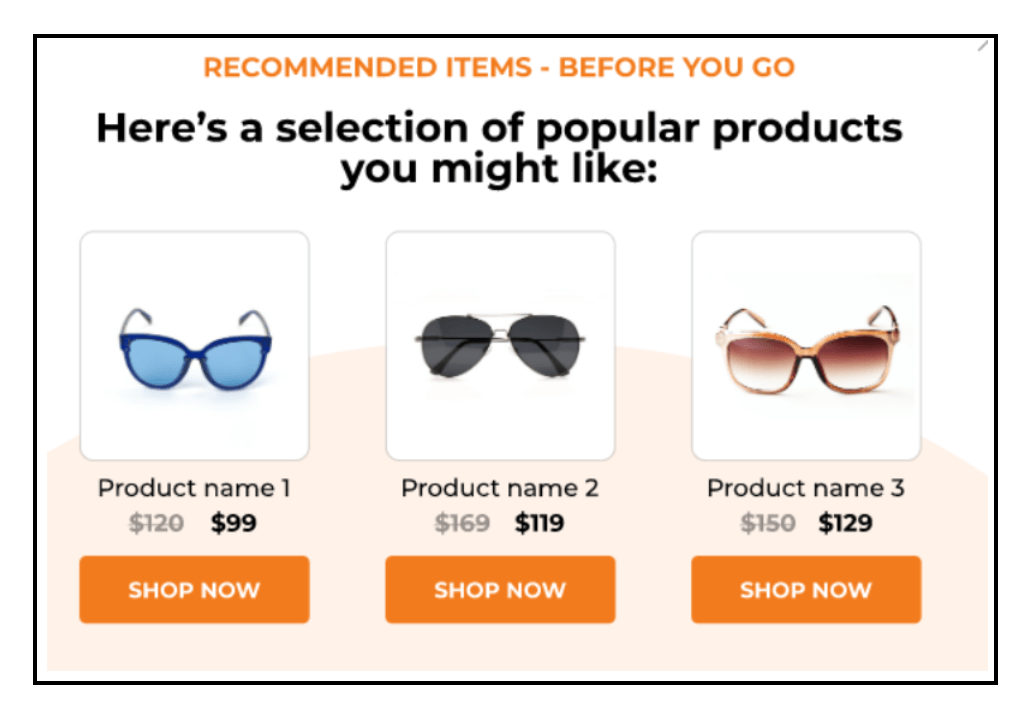
Product recommendation blocks, on a product detail page (PDP), may also be particularly persuasive in the sense that they influence online decision-making by providing alternatives, complementary, combo, or commonly bundled products which are associated with the product currently being browsed.
If you want to get started with your own product recommendations or expand on what you already have, take a look at these product recommendation use cases. We’ll reveal why they work and show you which customer journey stage to target for each.
1) Similar products
Product recommendations based on the details of the product, such as its name, description, and tags, are presented as “similar products”.
Why is it effective?
Using this tactic, customers can see a variety of products that are similar to the one they’re currently looking at, making it easier for them to find the one that best meets their requirements.
Your DTC brand can use this tactic if you frequently add new or unique products to your inventory, as you can immediately incorporate recently added items into your recommendation strategy without any manual tagging or customer behavioral data while still recommending relevant products.
The product pages of Space NK use this type of recommendation to help customers choose the right product:
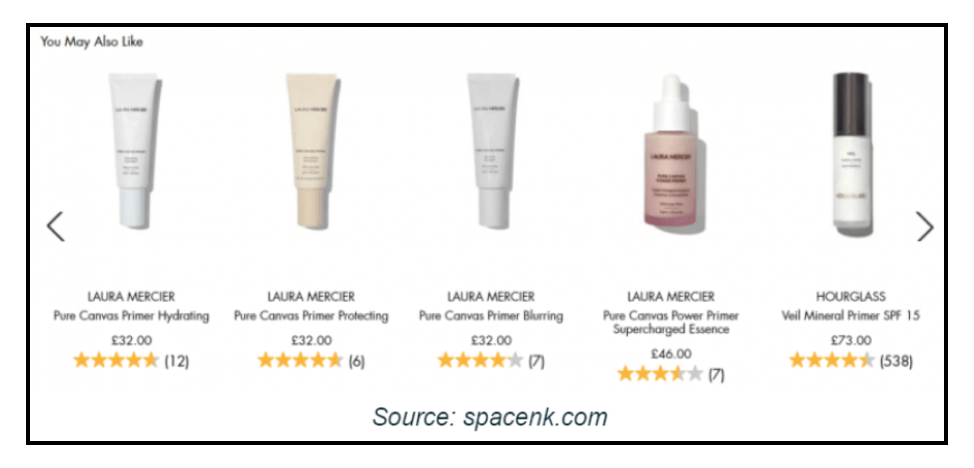
When to use it?
This type of product recommendation is ideal for customers who are in the research phase of their journey, as it assists them in locating the ideal product.
2) Best-selling/trending
This product recommendation strategy suggests items that are popular among online shoppers. These may be your current best-selling, most-viewed, or most-purchased products.
Why is it effective?
This product recommendation strategy employs social proof, the idea that individuals will imitate the actions of the masses. This is especially important for ecommerce, as, without the ability to try on, touch, and see products in person, customers are more susceptible to being influenced by the opinions of other customers.
Try including messages about popularity to increase urgency.

Also, add star ratings to product recommendations to increase social proof points!
When to use it?
This type of product recommendation is effective for customers in the research and purchase phases, who are seeking additional information about your products. Such product recommendations are also useful for those new customers or first-time visitors whose preferences you have yet to determine.
3) New arrivals
This product recommendation strategy suggests the newest products available, whether that’s throughout the site, as personalized recommendations in the browsed category, or from the customer’s preferred category.
Why is it effective?
Every few years, consumers rush to purchase the most recent iPhone. We have an inherent expectation that something new will be superior to its predecessor. In the same way, recommending your newest products enhances the overall shopping experience. Especially to those customers who love your products and brand.
This is especially true in industries where trends change rapidly, such as fashion and beauty.
The “New Arrivals”, “Recently Added”, or “Latest Products” recommendations are effective on your homepage, the corresponding product category page, and in your marketing emails. For more impact, suggestions can be filtered to show new arrivals in the customer’s preferred category. For instance, like what Surfdome does here under the Men’s category:
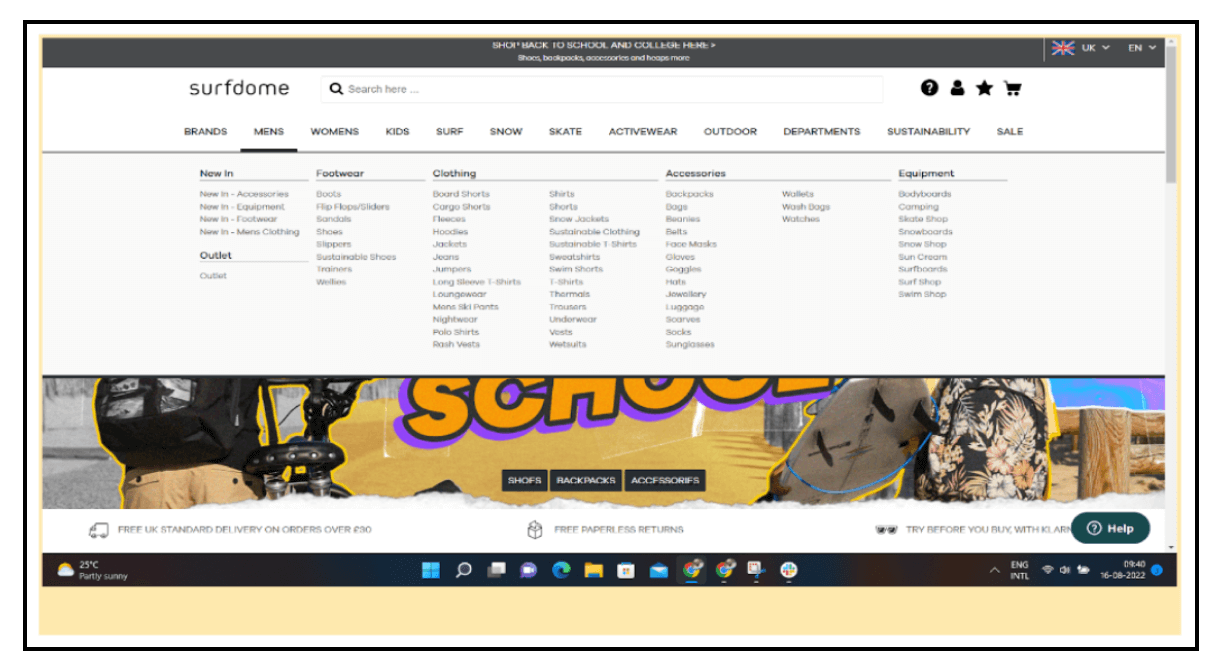
They also prioritizes its new arrivals on each category page:
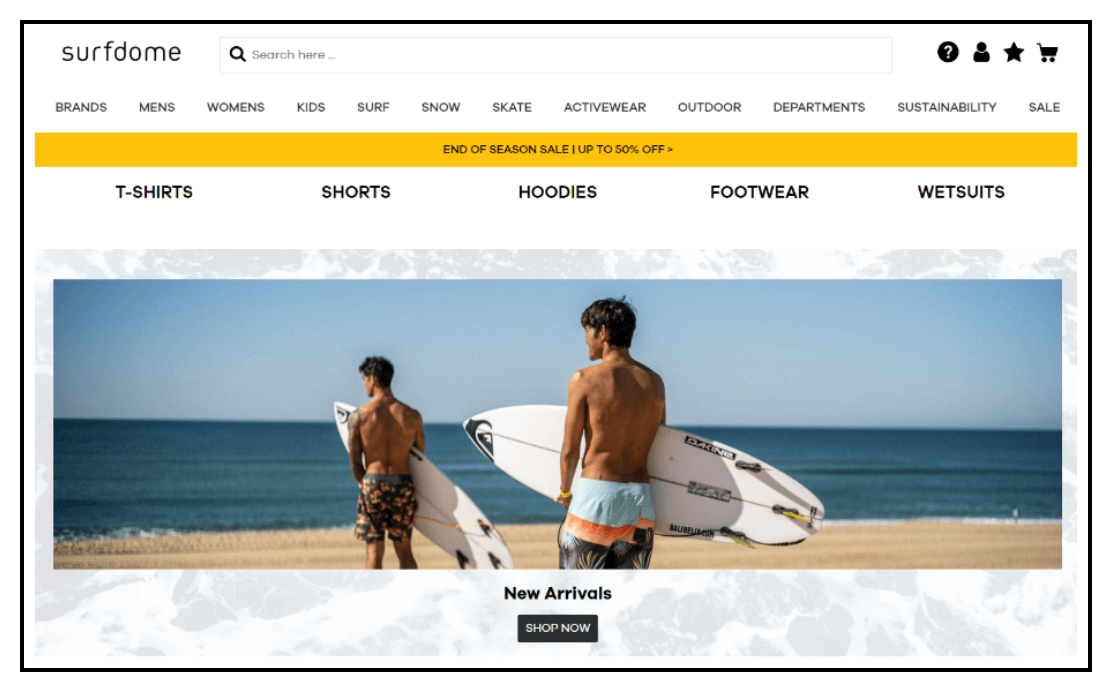
When to use it?
This type of product recommendation can be used at the research stage of the customer journey.
4) Frequently browsed
These product recommendation strategies suggest products in your online store that this customer, or other customers in the same segment, have frequently viewed or purchased.
Why is it effective?
These kinds of tailored suggestions are highly effective because they prompt buyers to revisit the store for products they’ve been eyeing but have yet to buy. This is a great approach to engage shoppers who may have been distracted before buying. It also leverages familiarity, as customers like things they’ve seen before.
You can use this recommendation type on the homepage and in personalized marketing emails/SMSes to target frequent browsers who have not yet made a purchase or to make it simple for repeat customers to reorder their favorite products.
Amazon does a great job at this by highlighting products that have already been purchased by other customers.
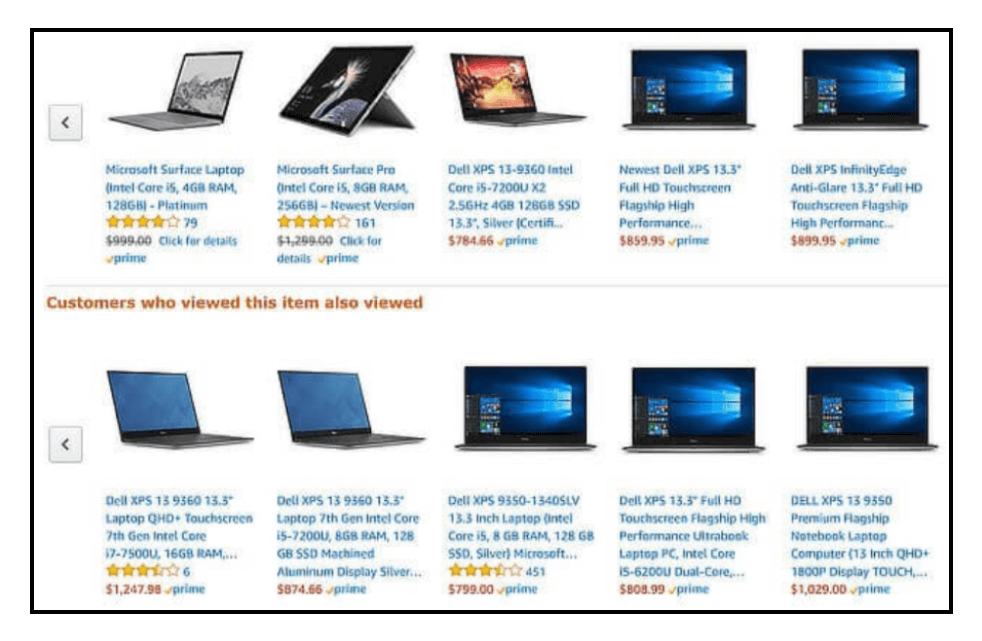
This is a great option for your newsletters as well where displaying a variety of product types is appropriate.
When to use it?
This strategy can be implemented during the research stage to assist first-time or new customers in making a purchase decision and during the loyalty stage to encourage customers to restock.
You can also use this kind of product recommendation strategy to upsell and cross-sell complementary or related products and incentivize them to buy a bundle at a lesser price.
Below is an illustration of how cross-selling can boost AOV.
MVMT customers can add a second watchband to their order for about $25. This is the perfect thing to sell alongside a $150 watch.
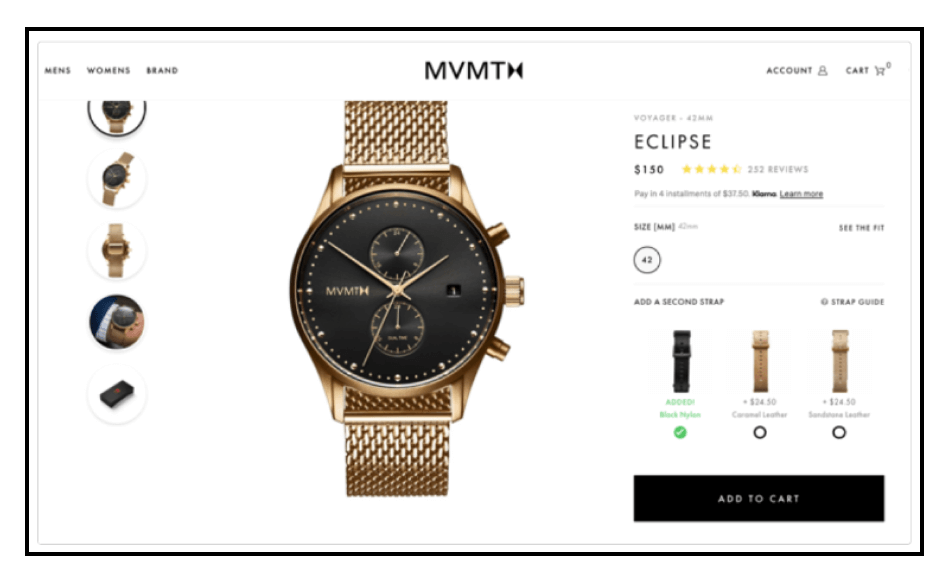
5) Frequently bought together
This product recommendation strategy suggests complementary products based on what people who purchased this item also purchased.
Why is it effective?
Customers are reminded of accessories and complementary items they may have forgotten to add to their carts.
You should use this product recommendation strategy on your checkout/cart page to increase your average order value. Or, try including it in your post-purchase emails to highlight products that customers are likely to want or need immediately after making a purchase.
For instance, the Xbox Gear shop does it quite well here:
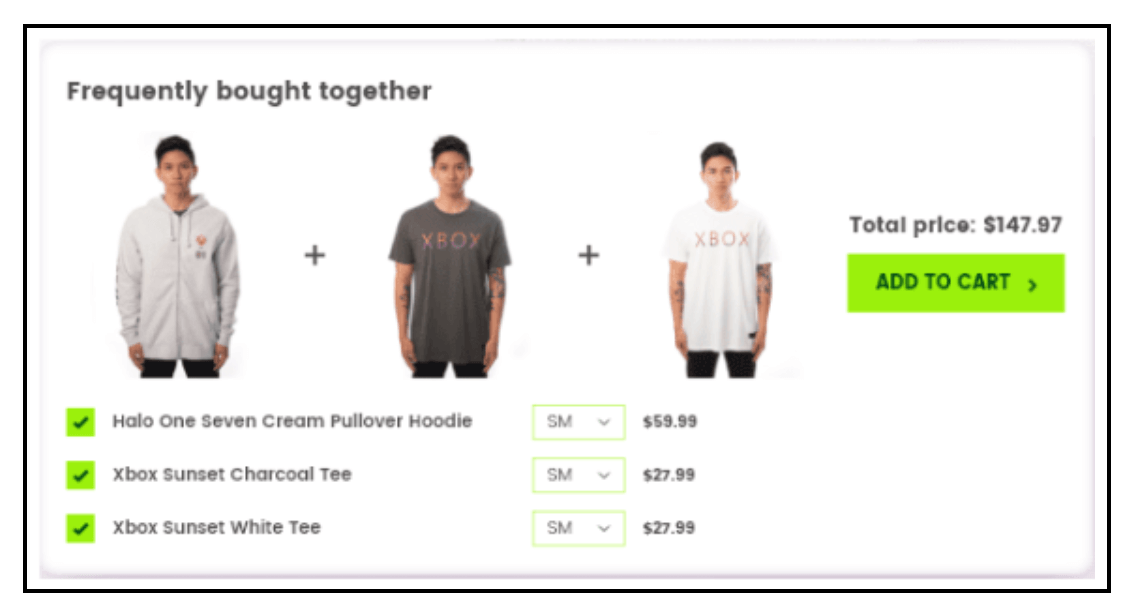
Here’s another example from Lancome. They recommend products purchased by other customers in a sidebar of the mini cart:
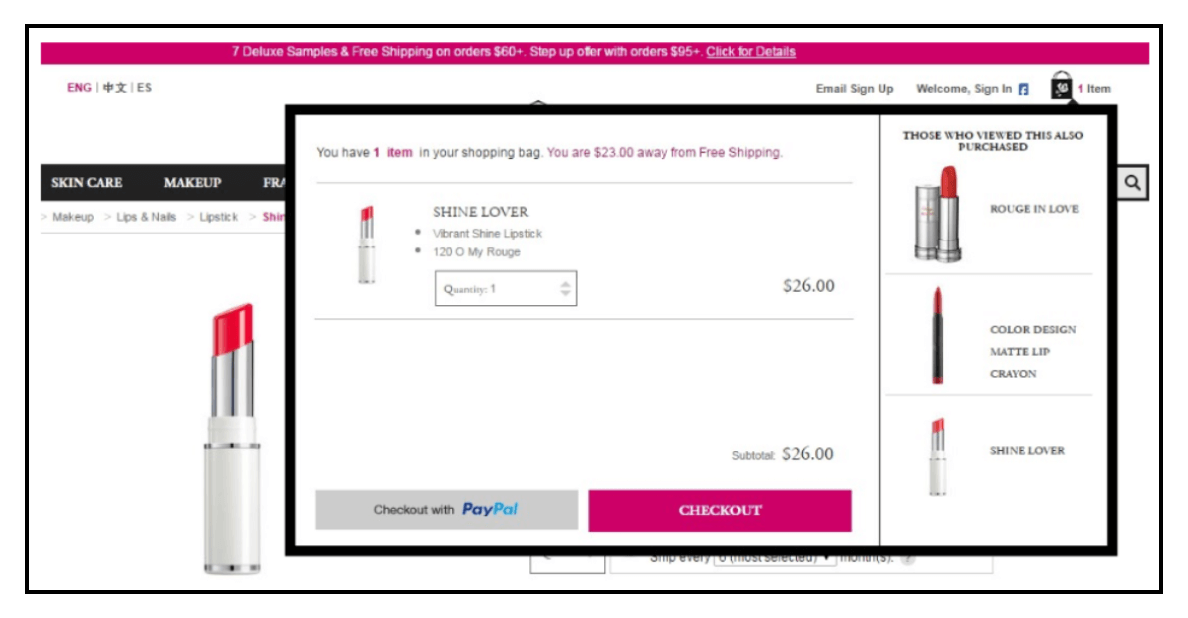
Check out how DigitalRev recommends customers to buy product accessories bundled along with the main product and save some in the process:

When to use it?
This recommendation tactic is used in the purchase stage of the customer journey, either to increase the order value at the checkout or to encourage additional purchases in post-purchase communications.
6) Related products/you may also like
Not to be confused with similar products, this product recommendation tactic displays products that you have defined for merchandising purposes as being related to the current product.
Why is it effective?
This is beneficial for cross-selling and upsell situations wherein you can have complete control over which products appear together. For instance, it can be used to suggest complementary products to customers as they browse. Also, if your store displays products from multiple brands, you can use this strategy to incentivize customers to buy related products across various brands and categories.
Wild Bounds employs this strategy by displaying products that “go well with” the item the customer is currently browsing:
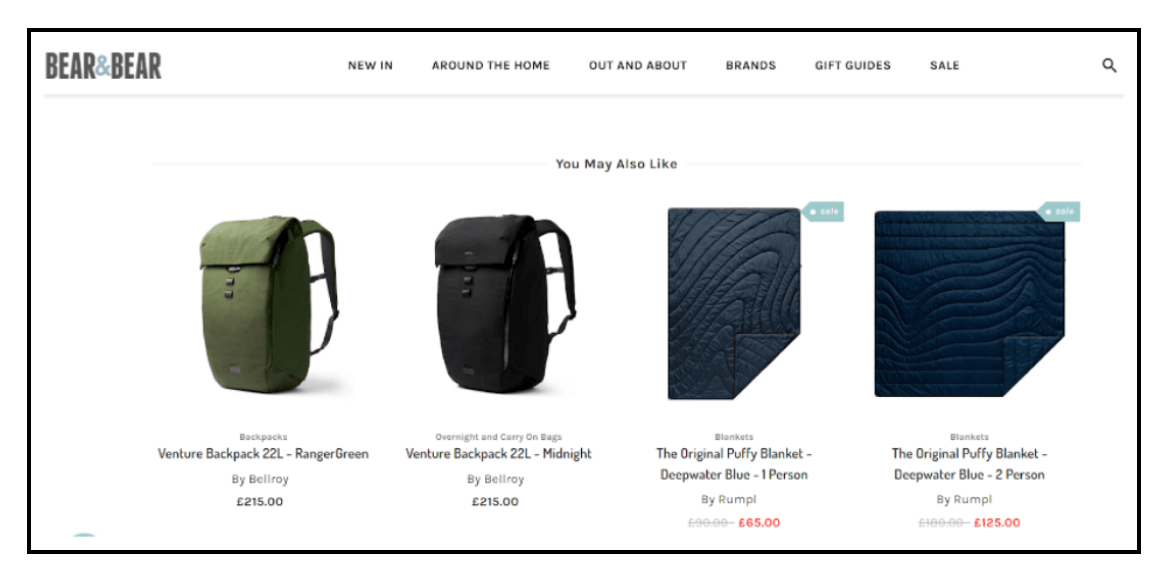
Lancome employs this strategy by displaying products that “go well with” the item the customer is currently adding to the cart:
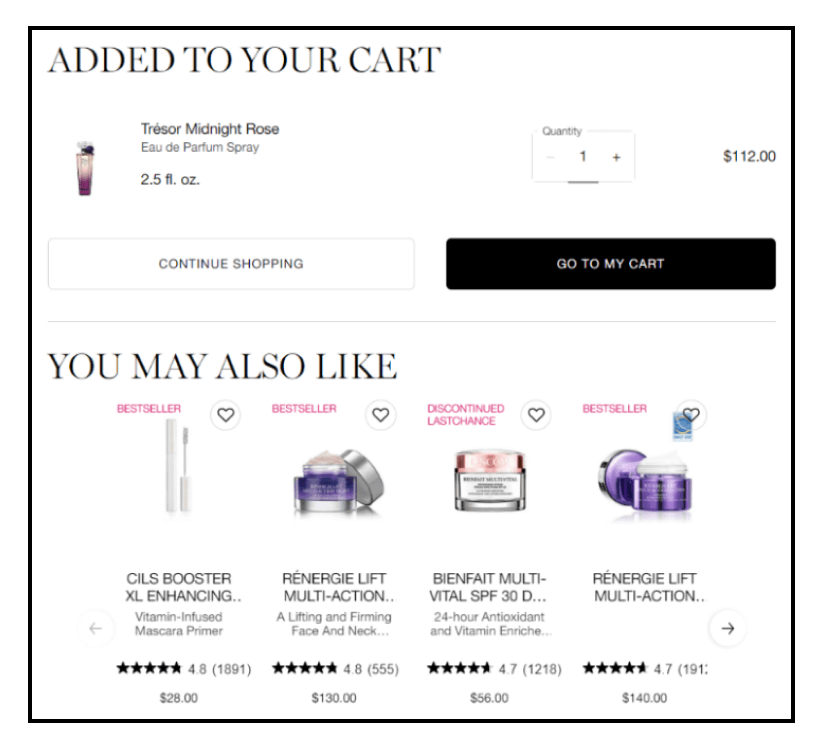
When to use it?
This type of product recommendation can be used to increase the AOV during the purchase stage of the customer journey.
7) Other customers also bought
In this case, an AI recommendation engine recommends other products on your site that were most frequently purchased by customers who viewed the product on the current page.
Why is it effective?
Similar to “people like you also bought,” this type of product recommendation tactic capitalizes on the likelihood that individuals who share a preference for one product will also agree on other products.
It predicts the products most likely to result in a conversion and enables you to display a broader selection of your product inventory to shoppers. On the product detail or checkout page, customers are presented with popular products they may not have considered during their initial search.
Here is an example of a Base London PDP displaying the items most likely to result in a sale:
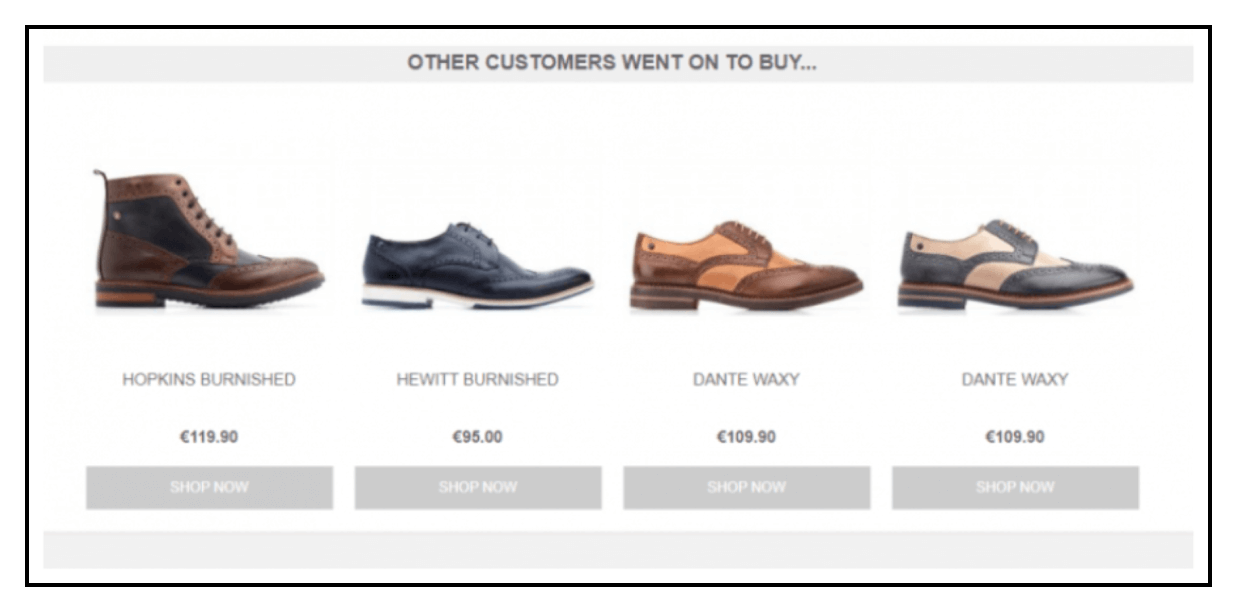
When to use it?
This recommendation tactic is used in the purchase stage of the customer journey to increase your AOV.
8) People like you also bought
This strategy examines the customer’s product purchase history and compares it to that of other customers who have viewed the same products to recommend the most likely future purchases.
Why is it effective?
By including a header such as “People like you also bought”, you appeal to the customer’s desire to follow the wisdom of previous shoppers, placing their purchase decision in the capable hands of their shopping predecessors.
Use this versatile recommendation strategy on your homepage, product pages, and search pages, as well as in your marketing messages.
When to use it?
At the purchase stage of the customer journey, you can target returning customers with this type of product recommendation. By recommending products based on other similar customers, you can encourage repeat purchases and foster customer loyalty.
Get more out of recommendations
It is now easier than ever to serve the most relevant products to customers at the moment when they are most engaged due to advances in AI and ML. AI enables you to automate ecommerce personalization at scale, allowing you to devote more resources to creating engaging content and making intelligent business decisions.
However, you need to balance the AI recommendation engine’s brilliance with your occasional human touch to guide product recommendations:
- You are a retailer who sells multiple brands and requires precise control over which labels appear next to one another.
- You have excess inventory of a particular product that you must sell off before the next season.
- You want to increase revenue from product recommendations by displaying only those products with the highest margins.
The most effective product recommendation engines combine the power of AI with the ability to filter recommendations according to your preferences and the real-time behavior of customers on your site.
Let the AI handle the challenging task of selecting the most engaging products while you retain complete control over how content is presented.
By experimenting with a blend of personalized and crowd-sourced product recommendations, social proof, and your own business rules based on past purchases, product affinity, and real-time behavior on site, you can achieve a level of personalization in your product recommendations previously reserved for physical stores.
You may also like
Essential resources for your success
























































